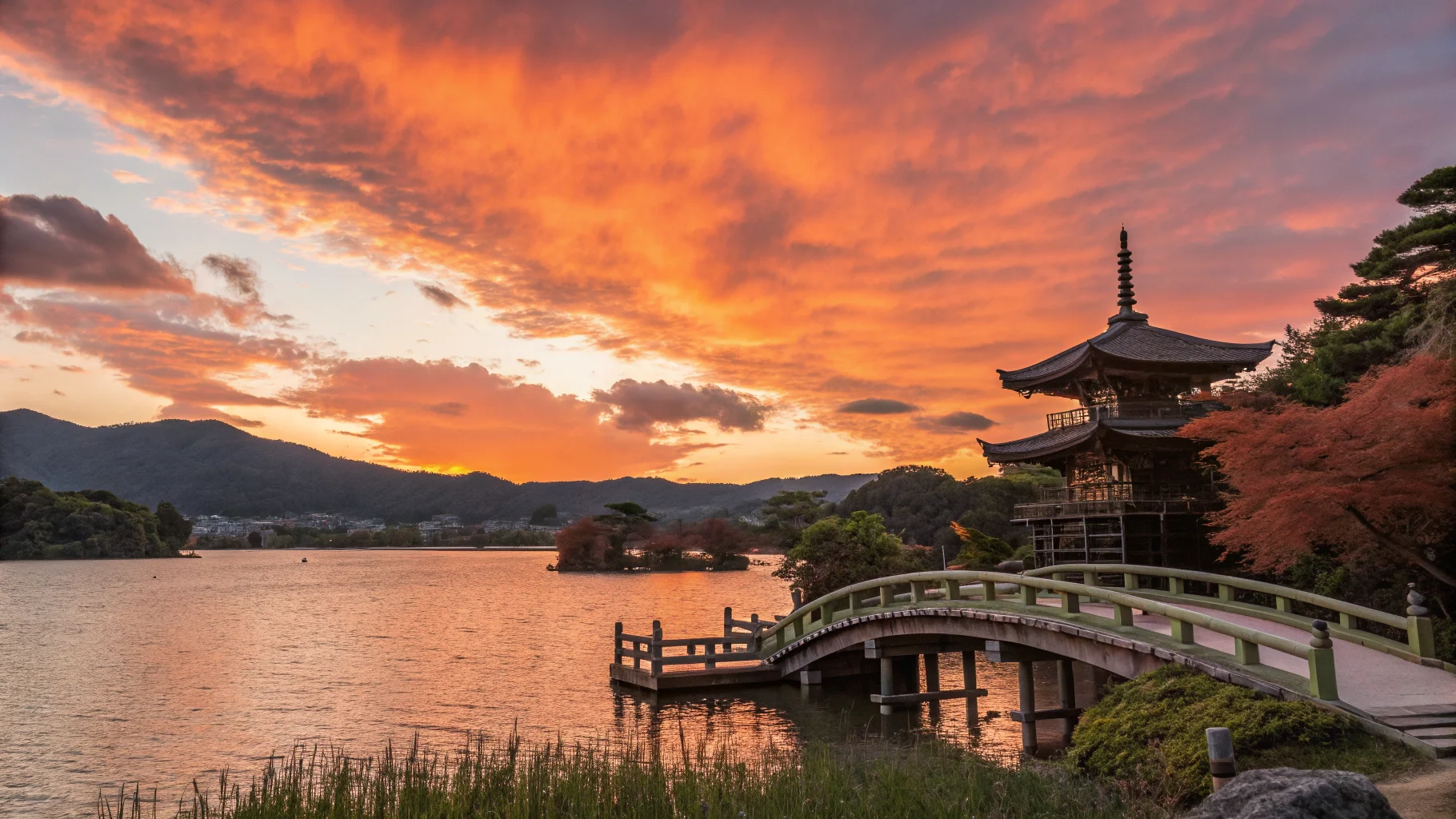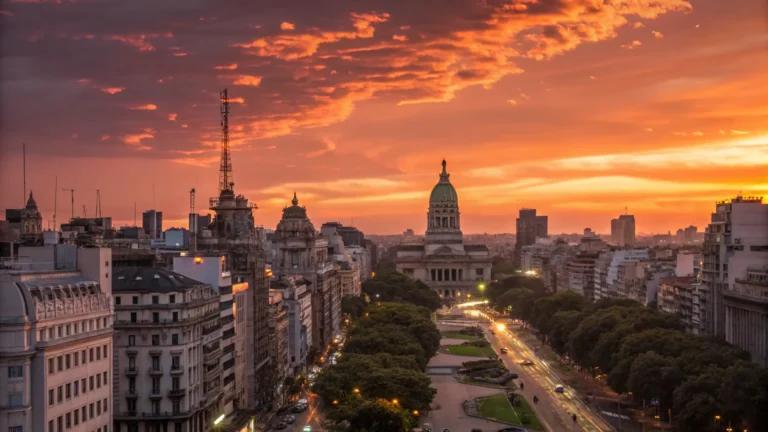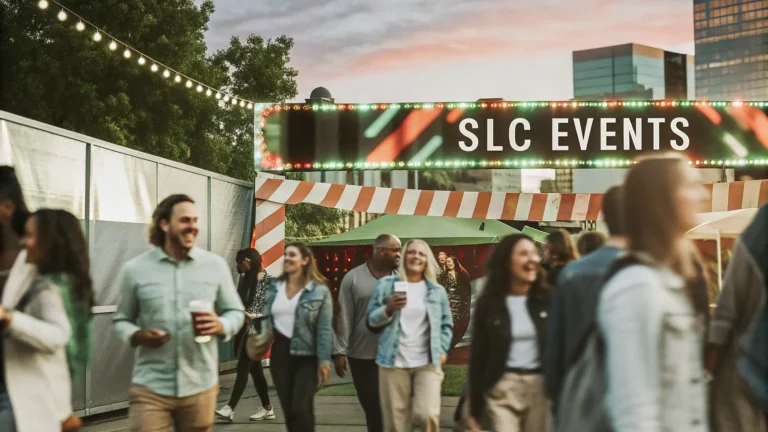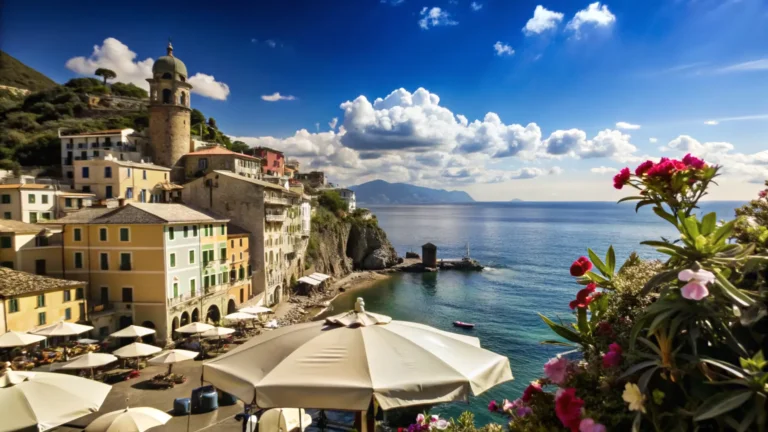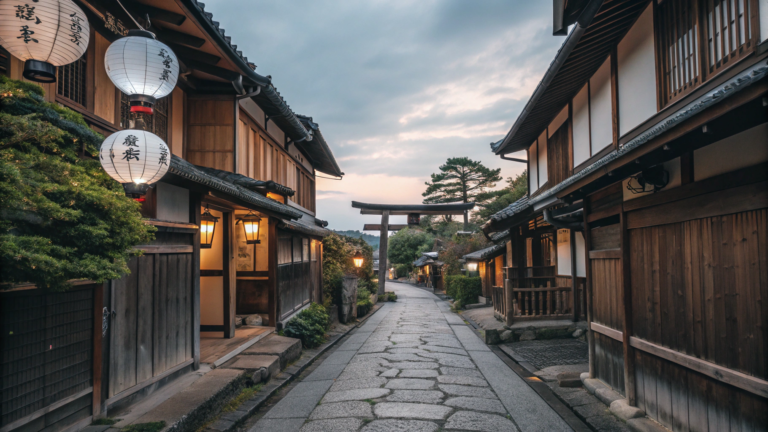One Week in Japan How to Conquer the Country in 7 Days
Last updated on May 26th, 2025 at 11:36 pm
The first thing that hit me wasn’t the jet lag or the humidity – it was the smell of grilled chicken from a tiny stall squeezed between two office buildings in Shinjuku. I’d been in Tokyo for exactly 47 minutes, dragging my oversized suitcase through crowds that moved like water around rocks, and I was already questioning every travel decision I’d ever made.
See, I’m the type of person who plans everything. Color-coded spreadsheets, backup plans for my backup plans, the works. But Japan? Japan laughed at my spreadsheets. It grabbed me by the collar and showed me what real adventure looks like.
That was October 2018, and I had exactly seven days to figure out why everyone kept telling me Japan would “change my life.” Spoiler alert: they weren’t kidding, but not for the reasons I expected.
Three trips later, I’ve cracked the code on how to spend one week in Japan without losing your mind, your wallet, or missing the stuff that actually matters. And trust me, there’s a lot that matters.
Getting Your Head Straight Before You Go
Look, planning a Japan trip can make you feel like you’re studying for a final exam in a subject you’ve never heard of. I spent weeks reading blog posts that made everything sound either impossible or too easy. The truth sits somewhere in the middle, and it’s way more interesting than either extreme.
Timing Your Trip (Or How Weather Became My Nemesis)
Every travel guide talks about cherry blossoms like they’re the holy grail of Japan travel. Here’s what they don’t tell you: sakura season turns the entire country into a beautiful, crowded nightmare. I learned this the hard way in April 2019 when I waited 90 minutes to see a tree. A tree!
Spring (March-May): Gorgeous, expensive, packed. Cherry blossoms are incredible, but you’ll share them with half the planet. Book everything months ahead and prepare your patience.
Summer (June-August): Hot enough to melt your enthusiasm, but the festivals are wild. I watched grown men carry a portable shrine through Osaka streets while sweating through my shirt just standing there. Worth it? Absolutely. Comfortable? Not even close.
Fall (September-November): This is the sweet spot. Perfect weather, fewer crowds, and the maple leaves put on a show that makes cherry blossoms look ordinary. Plus, everything harvest-related tastes better.
Winter (December-February): Cold but magical. The illuminations rival anything Disney’s ever done, hot springs feel like heaven, and you’ll have popular spots mostly to yourself.
The Money Talk Nobody Wants to Have
Every budget guide I read before my first trip was either wildly optimistic or scary expensive. Reality check: Japan costs what you make it cost, but there are some non-negotiables.
Your StyleWhat You'll Actually SpendBackpacker Life$1,200-1,800 for the weekNormal Human$2,200-3,200 for the weekLiving Your Best Life$5,000+ for the week
The JR Pass costs $280 for seven days and covers trains that would cost $300+ if you bought tickets separately. Do the math – it’s a no-brainer.
Here’s what surprised me most: you can eat incredibly well for $10-15 per meal if you know where to look. That fancy $200 kaiseki dinner? Save it for one special night. The $8 ramen from a tiny shop with four seats will blow your mind just as much.
Documents and Prep Work That Actually Matters
Most countries need visas for Japan, but Americans, Canadians, and Europeans get 90 days visa-free. Lucky us.
Buy your JR Pass online before you leave – you literally can’t get it in Japan anymore. I learned this watching a frustrated tourist argue with a station agent for twenty minutes.
Get cash. Lots of cash. Japan runs on paper money in ways that’ll shock you if you’re used to tapping cards everywhere. Even vending machines prefer cash, and yes, you can buy hot coffee from a machine on every corner.
Your Week-by-Week Breakdown (The Real Version)
Days 1-2: Tokyo Will Scramble Your Brain
Day 1: Landing in Organized Chaos
Touch down at Narita (cheaper flights) or Haneda (closer to the city), grab your JR Pass from the airport office, and brace yourself. Tokyo isn’t a city – it’s several cities that grew together and decided to call themselves one name.
Stay in Shibuya if you want to feel the pulse of modern Tokyo. Shinjuku if you want easy train access to everywhere. Asakusa if you want traditional vibes without the traditional prices.
Start with Senso-ji Temple in Asakusa. Yeah, it’s touristy, but there’s a reason. The approach through Nakamise Street gives you temple culture with shopping therapy. The tiny tempura shop three stalls down from the main gate? Order whatever the person in front of you got – you won’t regret it.
Afternoon hits different in Tokyo. Take the elevator up Tokyo Skytree or Tokyo Tower – your choice, both offer views that make your Instagram followers jealous. Skytree’s newer and taller, but Tokyo Tower has character.
Evening is when Tokyo stops pretending to be civilized. Hit Shibuya Crossing at sunset – not for photos, but for the feeling. Standing in that intersection as thousands of people cross around you is like being inside a perfectly choreographed dance you don’t know the steps to.
Dinner in Memory Lane (Omoide Yokocho) near Shinjuku Station. These tiny yakitori stalls fit maybe six people and serve chicken parts you didn’t know existed. Point at things, smile, drink beer, and prepare for the best meal of your trip so far.
Day 2: Diving Deeper Into the Madness
Start early in Harajuku – and I mean 7 AM early. Takeshita Street without crowds is actually enjoyable instead of claustrophobic. The fashion is still wild, but you can actually see it.
Walk to Meiji Shrine afterward. The contrast hits you like a slap – from neon chaos to forest quiet in ten minutes. This is Japan in a nutshell: ancient calm next to modern mayhem.
Akihabara in the afternoon, even if anime isn’t your thing. The electronics stores stack eight floors high with gadgets that won’t hit American stores for years. The arcades are loud, weird, and completely addictive.
Skip the Robot Restaurant (it closed anyway). Instead, explore Golden Gai at night – hundreds of tiny bars, each with personality and regulars who’ve been coming for decades. Pick one that looks welcoming and prepare for conversations you’ll remember forever.
Days 3-4: Kyoto Makes You Understand Japan
Day 3: Temples That Actually Matter
The shinkansen from Tokyo to Kyoto takes 2 hours and 15 minutes. Sit on the right side for Mount Fuji views if the weather cooperates. The train itself is an experience – perfectly on time, whisper quiet, and smooth enough to balance a coin on the window.
Kyoto hits different than Tokyo. Where Tokyo shouts, Kyoto whispers. Where Tokyo overwhelms, Kyoto invites.
Fushimi Inari Shrine first – those thousands of red torii gates everyone photographs. Here’s the secret: keep climbing. Most tourists turn back after the first section, but the real magic happens higher up where the forest gets thick and the crowds thin out.
Gion district in the afternoon. Walk slowly, respectfully, and keep your camera ready but not intrusive. Spotting a real geisha is like finding a moving piece of art, but don’t chase them for selfies – they’re working professionals, not theme park characters.
Sleep in a ryokan tonight. Yes, it’s expensive. Yes, you’ll sleep on the floor. Yes, it’s worth every yen. The kaiseki dinner alone – multiple courses of seasonal perfection – justifies the cost. The communal bath might feel awkward for five minutes, then becomes the most relaxing experience of your trip.
Day 4: Gardens and Gold
Early morning at Arashiyama Bamboo Grove. The light filtering through bamboo at sunrise creates this green cathedral that photographs can’t capture. By 9 AM, tour buses arrive and the magic gets trampled by selfie sticks.
Kinkaku-ji (Golden Pavilion) is mandatory but crowded. Go late afternoon when most tours have moved on. The golden reflection in the pond changes with the light – each angle reveals something new.
The Philosopher’s Path connects temples through neighborhoods that time forgot. Walk it slowly, duck into small shops, try the local sweets. This is where you understand why people fall in love with Kyoto.
Day 5: Osaka Feeds Your Soul
Osaka gets skipped by lots of first-time visitors who think it’s just another big city. Those people are idiots. Osaka has the best food in Japan, period.
The castle is fine – standard Japanese castle experience. But you’re not here for castles. You’re here because Osaka takes eating seriously in ways that border on religious devotion.
Dotonbori district is food paradise with neon decorations. Those giant mechanical crab signs and glowing octopi aren’t tourist traps – they’re landmarks pointing to incredible meals.
Try takoyaki (octopus balls) from street vendors. Watch them flip those round little beauties with picks like they’re conducting an orchestra. The outside crispy, inside molten hot, topped with sauce that varies by stand.
Okonomiyaki (savory pancakes) from any place with a line. Don’t worry about language barriers – hungry people understand each other. Point at what looks good, nod enthusiastically, and prepare for comfort food that redefines the category.
Osaka nightlife is more relaxed than Tokyo but equally fun. The beer is cold, the people are friendly, and nobody’s in a hurry to close down the party.
Days 6-7: Mount Fuji and Tokyo Goodbyes
Day 6: Chasing Japan’s Most Famous Mountain
Day trip to Hakone for Mount Fuji views. Fair warning: Fuji-san is moody and hides behind clouds more often than not. I’ve made this trip four times and only saw the full mountain twice. But the Hakone area is gorgeous regardless.
Lake Ashi boat rides offer potential Fuji views and definite good times. The Hakone Open-Air Museum mixes art with mountain scenery in ways that work surprisingly well.
End your day in an onsen (hot spring). After five days of city walking, sinking into mineral-rich hot water feels like a religious experience. Follow the rules – wash thoroughly before entering, no swimsuits, and try to relax despite being naked with strangers.
Day 7: Tokyo Sends You Home Happy
Your last day should be flexible and focused on whatever you missed. Tsukiji Outer Market for breakfast – the tuna sashimi here is so fresh it’s practically still swimming. Lines form early, but they move fast.
Souvenir shopping in Nakamise Street or any department store. Japanese packaging makes even mundane items feel special. Kit-Kats come in flavors you can’t imagine, and they all taste better than the American versions.
If you have time, teamLab Borderless is digital art that responds to your movement. It’s like walking through a video game designed by artists on the best drugs ever. Book tickets weeks ahead – this isn’t a last-minute decision.
Real Talk About Getting Around
The train system looks scary from the outside but makes perfect sense once you’re in it. Every sign has English, every station announcement gets translated, and Google Maps works perfectly for route planning.
The JR Pass covers most of what you need: all bullet trains (except the fastest Nozomi), local trains in major cities, and even some buses. Think of it as a weekly subscription to Japanese transportation.
Rush hour is real. 7-9 AM and 5-7 PM turns trains into human compression chambers. Avoid if possible, but if you get caught, just go with the flow – literally. You’ll get pushed onto trains in ways that seem impossible until it happens.
Station staff are incredibly helpful even when language barriers exist. Point at your destination on a map, look confused, and someone will guide you to the right platform.
Money and Payment Reality
Japan loves cash in ways that’ll surprise you. Even in 2024, many restaurants, especially good ones, only take cash. Convenience store ATMs (7-Eleven, FamilyMart) work with international cards and charge reasonable fees.
No tipping. Ever. Leaving money on tables or trying to tip taxi drivers can actually offend people. The service is already incredible – they don’t need extra motivation.
IC cards (Suica, Pasmo) work for local trains, subways, buses, and even some vending machines. Load cash onto them and tap to pay – simple and fast.
Cultural Stuff That Actually Matters
Bowing: Slight nods work fine. You’re not expected to master formal bowing, but a little head dip shows respect and gets returned with smiles.
Shoes: You’ll take them off constantly – temples, some restaurants, all traditional accommodations. Wear shoes that slip off easily and socks without holes.
Train etiquette: Keep conversations quiet, don’t eat smelly food, give up priority seats to elderly/pregnant passengers. Everyone follows these rules, so you should too.
Slurping: Ramen is meant to be slurped. Loudly. It cools the noodles and shows appreciation. Embrace the noise.
Food Adventures That Ruin You for Life
Street Food and Local Spots
Every region has signature dishes, and they’re all worth trying:
Tokyo ramen: Soy-based broth, perfect noodles, and toppings that vary by shop. The best places have lines and only four seats.
Kyoto kaiseki: Multi-course meals that are edible art. Expensive but unforgettable. Each dish reflects the season and the chef’s philosophy.
Osaka comfort food: Takoyaki, okonomiyaki, and kushikatsu (fried skewers). This is food that makes you happy just looking at it.
Convenience store meals: Don’t laugh – 7-Eleven food is fresh, cheap, and often better than restaurant meals. The fried chicken is legendary among locals.
Restaurant Navigation
Plastic food displays outside restaurants aren’t tacky – they’re helpful. Point at what looks good if you can’t read the menu. Most places are used to confused tourists and appreciate the effort.
Vending machines sell everything: hot coffee, cold beer, hot meals, ice cream, and things you can’t identify. They’re everywhere, they work perfectly, and they’re cheaper than any alternative.
Department stores have incredible food courts in their basements (depachika). High-quality prepared foods, perfect for picnics or hotel room dinners.
Shopping That’s Actually Worth Your Luggage Space
Tokyo electronics: Akihabara has gadgets that won’t hit American stores for months. Check voltage compatibility before buying anything major.
Kyoto crafts: Traditional textiles, pottery, and tea items. Quality is incredible, prices reflect the craftsmanship involved.
Universal items: Japanese skincare products, unique Kit-Kat flavors, and anything with exceptional packaging design.
Tax-free shopping: Tourists get tax refunds at major stores. Keep your passport handy and ask about tax-free procedures.
Shipping services work great for larger purchases. Japan Post is reliable and reasonably priced. Your back will thank you for not carrying everything.
Staying Connected Without Going Crazy
Pocket WiFi rental at the airport costs about $8-10 per day and works everywhere. Supports multiple devices and saves your international data plan.
Free WiFi exists at major stations, convenience stores, and tourist areas, but it’s not always reliable. Download offline maps as backup.
Essential apps that actually help:
- Google Translate (works offline, can translate photos of signs)
- Google Maps (download offline maps for backup)
- Hyperdia (train schedules and connections)
- Random restaurant finding apps (locals use them too)
Making Your Week Count
The best parts of my Japan trips weren’t the famous temples or bullet trains – though those are incredible. They were the unexpected moments: helping an elderly woman with her groceries and being invited for tea, getting lost in Tokyo back streets and finding a family restaurant with no English menu but incredible food, watching cherry blossoms fall like snow while eating convenience store onigiri on a park bench.
Japan rewards curiosity over checklists. Yes, see the Golden Pavilion and ride the bullet train, but leave room for surprises. Take wrong turns, try restaurants with no English menus, say yes to invitations you don’t fully understand.
The Japanese concept of omotenashi – wholehearted hospitality – means people go out of their way to help without expecting anything in return. This kindness extends to everything: train schedules that run exactly on time, restaurant service that anticipates your needs, and strangers who’ll walk three blocks out of their way to make sure you find your destination.
One week in Japan changes how you think about travel, service, and attention to detail. It spoils you for everywhere else while making you grateful for the experience. You’ll return home with stories that sound impossible, photos that don’t capture the real beauty, and an immediate desire to plan your next trip back.
Your Japan Questions, Answered Honestly
Can you really see Japan properly in just one week?
You’ll see enough to understand why people become obsessed with Japan, but not enough to stop wanting more. One week gives you Tokyo’s energy, Kyoto’s beauty, Osaka’s food scene, and Mount Fuji’s majesty. It’s like reading the first chapter of the best book ever written – satisfying but leaving you hungry for more.
Is the language barrier really that scary?
Not even close. Major tourist areas have English signs, translation apps work great, and Japanese people are incredibly patient and helpful. I’ve had entire conversations using hand gestures, smartphone translation, and lots of smiling. Basic phrases like “arigatou gozaimasu” (thank you) and “sumimasen” (excuse me) open doors, but they’re not required.
What’s the smartest money move for a week-long trip?
Buy the 7-day JR Pass before you leave home – it costs $280 and covers transportation that would cost $400+ otherwise. Carry more cash than feels comfortable; Japan runs on paper money in ways that’ll surprise you. Budget $15-20 per meal for good food, more if you want to splurge on kaiseki or high-end sushi.
How do you pick where to stay in each city?
Tokyo: Shibuya for nightlife and energy, Shinjuku for train connections, Asakusa for traditional vibes without traditional prices. All three put you close to major attractions and transportation.
Kyoto: Near Kyoto Station for convenience, or in Gion for atmosphere. Book early – good places fill up fast, especially during cherry blossom and fall foliage seasons.
Osaka: Anywhere near Dotonbori puts you in the middle of the food scene, but it can get noisy at night.
What’s the biggest mistake first-time visitors make?
Overpacking their schedule. Japan rewards slow exploration – rushing from temple to temple misses the magic. Also, many people avoid convenience store food, which is a huge mistake. 7-Eleven meals are fresh, cheap, and often better than restaurant options.
How much of a difference does the season really make?
Huge difference. Spring brings cherry blossoms and massive crowds – beautiful but exhausting. Summer means festivals and humidity that’ll melt your enthusiasm. Fall offers perfect weather and fewer tourists – this is the sweet spot. Winter brings illuminations and hot springs but limited mountain access.
Is Japan really as expensive as everyone says?
It costs what you make it cost. You can eat incredible ramen for $8 or spend $300 on dinner – both experiences are worth it in different ways. Transportation is pricey but efficient (hence the JR Pass). Accommodations range from $25 hostels to $500+ luxury ryokans. The key is knowing where to splurge and where to save.
The Bottom Line
Your one week in Japan will be nothing like you expect and everything you hoped for. It’ll challenge every assumption you have about travel, service, and what’s possible when an entire culture commits to doing things right.
You’ll come home with stories that sound made up, a phone full of photos that don’t capture the real beauty, and an immediate need to start planning your return trip. Because here’s the thing about Japan – one week is enough to fall completely in love, but it’s never enough to see everything.
The country will surprise you, confuse you, feed you better than you’ve ever been fed, and show you hospitality that’ll spoil you for everywhere else. It’ll make you question why other places can’t run trains on time, why customer service elsewhere feels half-hearted, and why you waited so long to visit.
Start planning now. Your future self will thank you for every moment of this incredible week.
Drop a comment below and tell me what you’re most excited (or nervous) about for your Japan trip. I love helping people plan these adventures and hearing about how they turn out!

